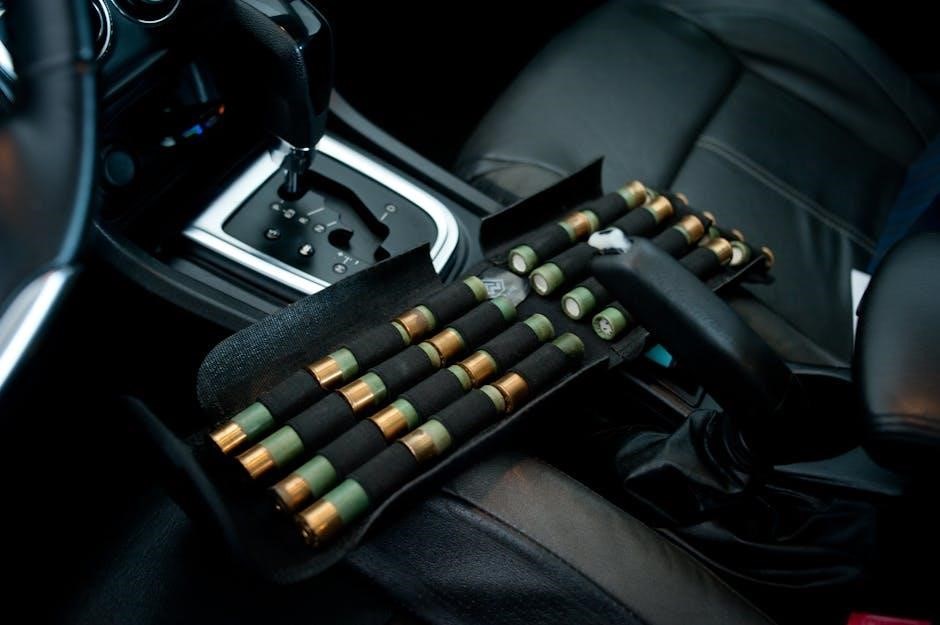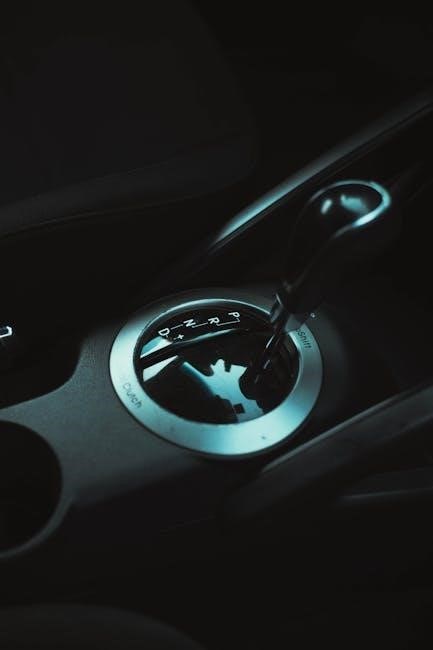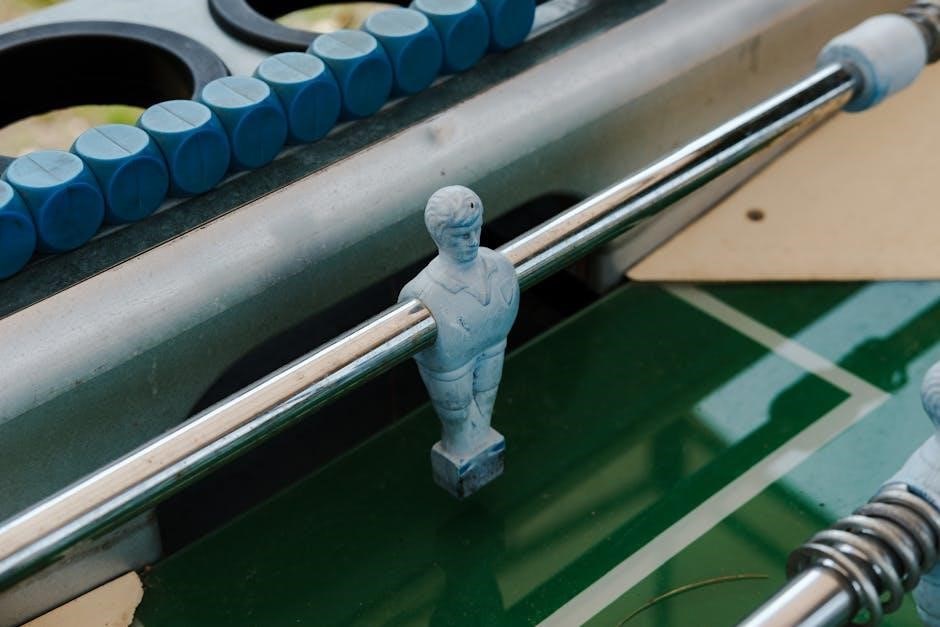A manual transmission relies on synchronizers to enable smooth gear shifts without requiring precise RPM matching between engine and drivetrain․ These critical components coordinate shaft speeds, ensuring seamless transitions between gears․ By eliminating noise and vibration, synchronizers enhance driving comfort and efficiency․ Their role is vital for maintaining optimal performance in manual vehicles, making them an essential part of the system․

Function and Components of Synchronizers
Synchronizers in manual transmissions ensure smooth gear shifts by coordinating the rotation speeds of the input and output gears․ They consist of a hub, sleeve, springs, and insert keys, working together to align gears seamlessly․ This mechanism prevents grinding and wear, enabling effortless transitions between gears while maintaining efficient power delivery and driver control․
2․1 Basic Function of Synchronizers
The primary role of synchronizers in a manual transmission is to ensure smooth and seamless gear shifts by synchronizing the rotational speeds of the input shaft and the gears․ When the driver presses the clutch pedal, the synchronizers engage, allowing the gears to match their speeds before meshing․ This process eliminates the need for the driver to manually “double-clutch” or carefully rev-match, making shifting easier and reducing wear on the gears․

The synchronizers achieve this by using a combination of mechanical components to temporarily connect the gear to the input shaft, ensuring both are rotating at the same speed before the gear is fully engaged․ This synchronization process minimizes friction and prevents the grinding or clashing of gears, which can lead to premature wear or even complete failure of the transmission․
By facilitating smooth transitions between gears, synchronizers enhance the overall driving experience, providing a more comfortable and controlled ride․ They are particularly important in modern manual transmissions, where quick and precise shifting is expected․ The basic function of synchronizers is essential for maintaining the efficiency, performance, and longevity of the transmission system․

2․2 Components of a Synchronizer
A synchronizer in a manual transmission consists of several key components that work together to facilitate smooth gear shifts․ The primary components include the hub, sleeve, springs, insert keys, and the blocker ring․ Each part plays a distinct role in the synchronization process․
- Hub: The hub is splined to the main shaft and rotates with it․ It serves as the base to which other components of the synchronizer are attached․
- Sleeve: The sleeve is splined to the hub and slides along it during shifting․ It is responsible for engaging the desired gear by meshing with the gear teeth․
- Spring-Loaded Insert Keys: These are small, spring-loaded components that hold the sleeve in place, keeping it centered on the hub when not engaged․
- Blocker Ring: The blocker ring is a friction-lined component that plays a crucial role in synchronizing the speed of the gear with the input shaft․ It temporarily engages with the gear to slow it down or speed it up before the sleeve locks into place․
Together, these components ensure that the gears and input shaft rotate at the same speed before meshing, eliminating noise, vibration, and wear․ The design and materials used in these components, such as brass or carbon friction facings, can vary depending on the application and desired performance characteristics․ Understanding these components is essential for diagnosing and repairing issues with manual transmission synchronizers․

How Synchronizers Work
Synchronizers ensure smooth gear transitions by matching the speed of the gear to the transmission’s input shaft․ When shifting, the driver presses the clutch, disengaging the engine․ The gearshift directs the synchronizer to engage, using friction to align the gear’s speed with the shaft․ Once matched, the sleeve locks in, completing the shift seamlessly․
3․1 The Synchronization Process
The synchronization process begins when the driver presses the clutch pedal, disconnecting the engine from the transmission․ This allows the gearshift to move freely․ The driver then selects the desired gear, which activates the synchronizer․ The synchronizer’s friction surfaces engage, slowing or speeding up the target gear until its speed matches the input shaft․ Once synchronized, the gears mesh smoothly, and the clutch pedal is released to re-engage the engine with the transmission․

3․2 The Physics Behind Synchronization
The physics behind synchronization in manual transmissions revolves around the principles of torque, friction, and rotational speed․ When shifting gears, the synchronizer ensures that the gear being selected rotates at the same speed as the input shaft․ This is achieved through the application of friction, which temporarily connects the gear to the synchronizer hub․ The frictional force generated by the synchronizer’s blocker ring slows down or speeds up the gear until its rotational speed matches the input shaft’s speed․
Once the speeds are synchronized, the gear can engage smoothly with the input shaft, eliminating grinding or hesitation․ The synchronizer’s ability to transfer torque during this process is crucial for maintaining control over the vehicle’s acceleration and deceleration․ The physics of friction plays a central role here, as it allows the synchronizer to gradually adjust the gear’s speed without causing abrupt changes in the drivetrain․
The process also relies on the conservation of angular momentum, where the synchronizer acts as an intermediary to balance the rotational energy between the input shaft and the gear․ This ensures that the transition between gears is seamless and efficient․ By leveraging these fundamental physical principles, synchronizers enable smooth and precise gear shifts, making manual transmissions both functional and driver-friendly․
In essence, the physics behind synchronization is a delicate balance of friction, torque, and rotational speed, all working together to facilitate smooth gear transitions in a manual transmission system․

Types of Synchronizers
Manual transmissions feature brass-faced and carbon-faced synchronizers, each offering distinct advantages․ Brass synchronizers provide durability and effective heat dissipation, ideal for high-performance applications․ Carbon-faced synchronizers deliver quieter operation and smoother engagement, suitable for everyday driving․ Modern transmissions often use strut-type blocking synchronizers, enhancing reliability and shift quality across various driving conditions․
4․1 Brass vs․ Carbon-Faced Synchronizers
Brass-faced and carbon-faced synchronizers are two distinct types, each offering unique benefits and applications․ Brass-faced synchronizers are known for their durability and excellent heat dissipation, making them ideal for high-performance and heavy-duty vehicles․ They can withstand the rigors of aggressive shifting and high-stress conditions, ensuring long-lasting performance․ However, they may produce slightly more noise during operation compared to their carbon-faced counterparts․
Carbon-faced synchronizers, on the other hand, are designed for smoother and quieter operation․ They are often used in passenger vehicles where comfort and noise reduction are priorities․ Carbon-faced synchronizers provide a more seamless shifting experience and are less prone to wear under normal driving conditions․ However, they may not perform as well in high-stress situations or extreme temperatures, where brass-faced synchronizers excel․
The choice between brass and carbon-faced synchronizers depends on the vehicle’s intended use and the driver’s preferences․ Brass-faced synchronizers are favored in racing and high-performance applications, while carbon-faced synchronizers are better suited for everyday driving․ Both types require proper maintenance to ensure optimal performance, including regular lubrication and inspection for wear․ By understanding the strengths of each material, drivers can make informed decisions to enhance their driving experience and extend the life of their manual transmission․